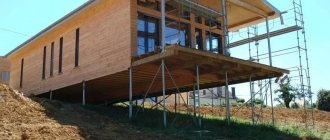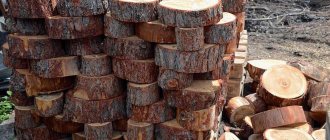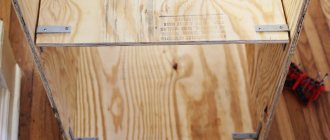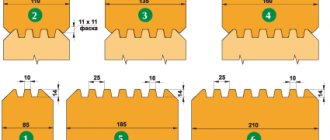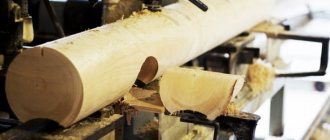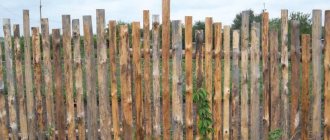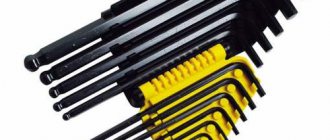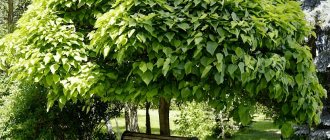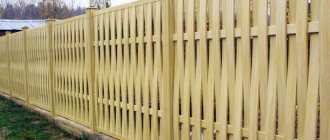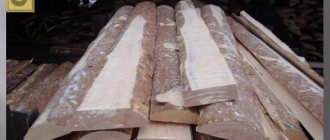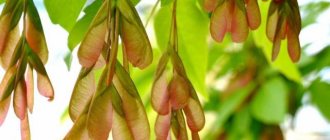An integral attribute of decorating a yard in a rustic, ethnic or country style is a wicker fence. They can be used to beautifully decorate flower beds, front gardens, divide the garden into zones, and a tall tyn will protect the estate from prying eyes.
Such fencing requires minimal investment from the owners. The main thing is to understand the weaving technique.
Users often search for:
- DIY wooden fence
- Options for a European picket fence
Pros and cons of braid
A wattle fence is a low fence made from intertwined twigs of plants or tree branches. Its main function is decorative.
Among the advantages of such a fence:
- Natural material is used for production.
- Doesn't require a lot of money.
- Easy to assemble yourself at home.
- Wicker sections go well with metal and plastic poles.
- The choice of different weaving techniques allows you to create unique patterns and compositions.
Among the disadvantages of a wicker fence:
- Service life does not exceed 10 years. Then the branches may begin to shrink and break. The tyn will have to be replaced with a new one.
- Does not perform a protective function. Building such a fence on the side of the street or road is not a good idea.
- If one of the rods is broken, it will be difficult to repair.
As a decorative element it will look original in the courtyard of a country house, in the village, or as an interior decoration for a country-style cafe. In addition to the fence, craftsmen can weave various crafts, baskets, flower pots (vases for flower pots), and make benches.
The best time to procure raw materials
The most favorable time for harvesting willow twigs is spring or late summer. In the spring, the main task will be to catch them before the sap flows, and therefore it is best to start preparing the rods in April and May. You can also make preparations at the end of summer and at the beginning of autumn - August, September, October - before the soil freezes. And it is in autumn that the color of the bark of the twigs becomes different shades - from milky green to burgundy, which combine perfectly. It is ideal to go shopping for workpieces on a sunny and dry day, since in such weather both the quality of the material and its storage conditions improve significantly and the work will be more enjoyable.
Materials for wicker fence
Along with easy assembly, the fence can, if necessary, be dismantled and moved to another location. To extend the service life of the fence and increase reliability, it is better to use PVC pipes and profile metal pipes as posts.
When a palisade is created, each of the sticks must be treated with impregnation or an antiseptic to remove moisture.
A fence assembled from separate sections will last many times longer than a solid wall of branches.
Let's take a closer look at what raw materials are best used for wattle.
Tree branches
Not all breeds are suitable. Dry branches or brushwood are not used. It's too brittle. This type of fence will not last long.
Hazel
A fence made of walnut branches is a durable design option.
The material is harvested in early spring before buds form. You need to cut off young shoots. They are easily intertwined due to excellent flexibility and rarely break. A properly assembled fence turns out to be a reliable wall of branches.
Willow, willow
Low bush-type willows are often found in wetlands. Their scientific name is talnik. They are also suitable for creating hedges.
Willow branches as raw materials have a number of advantages:
- The material is very flexible, which simplifies weaving and allows you to give the structure any shape.
- Wear-resistant. Subject to periodic treatment from moisture.
- All types of willow can be used.
- You can make a living and non-living hedge.
To make a living willow fence, you need to plant young branches in the ground. Willow is easily accepted. It is customary to weave shoots together vertically during growth. A beautiful wicker green wall emerges.
A dead hedge is pre-cut branches intertwined.
You need to prepare for weaving in advance. Willow trees can begin to be cut from mid-autumn to early spring.
The following are used as fence posts:
- thick poles;
- beam;
- fittings;
- PVC pipes, metal.
If the raw materials begin to break after storage in winter, then the craftsmen recommend that before constructing the fence, pour boiling water over the rods and leave it there for several hours.
Vine
Grapevine is an excellent raw material for making wattle.
Among the advantages:
- flexibility;
- long rod length;
- resistance to temperature changes and wear;
- moisture resistance.
Thanks to these advantages, the fence will last for many years. Grapevine fences enclose garden beds, flower beds, and children's playgrounds.
Due to its good flexibility, the vine will make a beautiful arch for the garden, a partition for zoning a summer cottage.
Birch
Birch branches are a unique material. The unique combination of white and black will turn the fence into an elegant decoration.
Thick birch twigs assembled together form a reliable palisade - a blank wall, which, along with a decorative one, also performs a protective function. To increase safety, the owners make the top part sharp in the form of a stake.
For the palisade, long branches are taken - from 1.7 m, with a diameter of 5 cm.
Plants
You can make a beautiful fence not only from tree branches, but also from reeds or cattails. We will discuss the nuances of such a fence below.
Reed, cattail
The reeds look like dense strips. This is free material, which is abundant near bodies of water.
The main disadvantage of reeds is low strength and fragility. When the rods dry out, they become brittle. A finished fence will last a maximum of a couple of years, then it will have to be replaced.
For weaving, reeds are formed into bundles and tied with wire or rope to wooden supports and crossbars.
A reed fence is made low, like a border, enclosing flower beds and flower beds.
Veneer
Veneer is thin strips of wood. It is made from different wood species. For wattle fence it is better to take oak.
The fence is assembled in sections. They are attached to the wooden frame with small nails.
Without experience, weaving will be problematic, so it’s easier to buy ready-made veneer sections. They are also perfect for street gates.
Boards
For braiding, use thin boards, preferably hardwood. Additional supports made of thicker boards are installed between the pillars in a vertical position. All lumber is treated with an antiseptic before installation.
The recommended board thickness for fence sections is from 2 cm.
Features of a wicker fence
A traditional fence is a lightweight fence made from flexible branches or shoots. A characteristic feature of such a fence is its chaotic, makeshift structure, that is, the material is used in its “natural” form and is practically not processed. Wicker fences are classified as decorative structures, as they rarely exceed 1.5 in height. High fences are still found today, but this solution does not justify its existence, since the dimensions do not compensate for the fragility of the material, and the cracks will not allow the area to be hidden from prying eyes.
The wattle fence at the dacha looks very beautiful
It is customary to use fences to enclose relatively small private properties, or to use them as additional fences inside and outside the site, for example, to enclose flower beds, a vegetable garden, etc. It is also ideal for delimiting an area between neighboring areas, since a low structure will not greatly shade the adjacent territory.
Weaving methods and technologies
There are a whole lot of them. The photo above shows fragments of popular techniques. Below we will look at the features of the three main methods.
Vertical
Wooden planks or branches (2-3 pieces depending on the height of the fence) are attached to the posts in a horizontal position. The slats are intertwined with rods in a vertical position. The bottom of the fence should start from the thick edge of the bars. The upper edge is fixed with wire or rope.
Horizontal
Horizontal is the classic way to create a fence. Masters also call this technique the figure eight.
Every half meter it is necessary to drive supports into the ground.
Weaving begins from the thick edge of the branch. The branch is passed between each pillar in turn. The next row must be walked on the other side of the fence. After several rows, a figure eight pattern will be noticeable.
If the rods are thin, then it is better to collect them in bundles and only then start weaving.
Chess
A variation of the horizontal method. The difference is in the use of several rods at once. Usually thin ones are selected.
The result of correct application of the technique is a pattern resembling a chessboard.
Instructions for creating a vertical tine
In order to make a vertical fence with your own hands , just follow simple instructions and follow the sequence of actions:
- First you need to make all the necessary markings for installing the support pillars. You can make supports from any durable material: thick pipes, logs, fittings, and so on. The thinner the diameter of the rods, the closer to each other the support pillars should be placed.
- After installing the support and strengthening it, you can begin stringing the rods. To do this, you need to tie several thick branches horizontally to already installed supports - they will become planks to which the finished rods will subsequently be attached. Three or four cross bars for each span are sufficient.
After this, it is enough to take the twigs and start threading them through the prepared horizontal slats. The branches need to be strung in a vertical direction, slightly bending during the weaving process. In this case, the thickened ends should go into the prepared foundation and rest tightly against it.- In order for the branches to be pressed tightly against each other, they need to be compacted a little with a hammer, and then tied together on top with strong wire, rope or fishing line.
- Excess and uneven branches that stick out strongly need to be trimmed with a knife or pruning shears.
- To preserve the appearance of the rods, you should cover the finished fence with stain or other protective compound.
That's all, the vertical fence fabric is ready. If desired, it can be decorated with some decorative elements or simply painted in any color you like.
How to make a beautiful wattle fence with your own hands: step-by-step instructions
At home, assembling a fence is not so difficult if you take the preparation of the material responsibly and follow the tips of the masters.
Set of tools
In the process of work you will need the following available tools:
- shovel;
- hammer;
- pruning shears or garden shears;
- knife;
- screwdriver.
You will also need a container for soaking the rods.
Rules for preparing rods
Before cutting willow twigs and vines, there are several points to consider:
- The recommended harvesting period is from the end of September to mid-March, and in the southern regions - until the end of February.
- There should be no leaves or side shoots on the rods. Too short ones are also not suitable.
- All rods should be approximately the same diameter (up to 1 cm) and length. Thicker ones will be needed to strengthen the fence.
If the material is prepared immediately before weaving, then you should not soak it in water for a long time, since the branches will already be quite flexible.
Material that has been sitting all winter will become brittle, so it is placed in a container with hot water for several hours. The rods will become softer and regain their former flexibility.
After soaking, it is better to remove the bark from the twigs.
According to user reviews, wattle fences made from twigs without bark last much longer.
The peeled stems are washed with antiseptics to remove moisture. The part that will be in contact with the ground is treated especially carefully. The same applies to wooden supports.
In addition, with special compounds you can paint and change the color of the material to deep brown, sand, khaki, chocolate. But each twig is passed separately.
You can extend the life of the fence by firing or using chemicals, giving the structure an antique effect.
Weaving process
The work is carried out in the following order:
- At the site of the future fence, pegs are driven in around the entire perimeter, connecting them together with a tightly stretched rope.
- With a horizontal weaving pattern, the posts are installed at a distance of 30–50 cm from each other, with a vertical weaving pattern - up to 1 m.
- The minimum depth of the pillars is from 50 cm. To simplify the process, a crowbar will be useful. They form holes for supports. Then the pole is driven in.
- With the vertical weaving method, intermediate posts are installed, which will ensure good stability of the rods.
- With horizontal weaving, a wooden batten or picket fence is placed at the top of the posts. Once the desired weaving height is reached, the bar is removed.
- When the pillars are aligned, you can begin weaving. You need to start weaving from the thick edge of the rod.
- The rod is placed so that the weaving resembles a figure eight.
- The lower rows are fixed with wire so that they do not come into contact with the ground. To maintain the same pattern step, wire or rope is also used.
- If desired, it is allowed to periodically change the direction of the rod.
- When the stem ends, the next stem begins to be woven from the previous pole.
- The top row is also fixed with wire.
- If various decorative elements will be hung on top of the fence, then you need to leave up to 10 cm of posts without weaving.
Reed stems are not used as raw materials one at a time. To achieve minimum strength, they are woven in at least 5 pieces.
To make fence supports last longer, wooden sticks can be inserted inside iron, steel or polymer pipes.
Caring for a finished fence
The average service life of a fence does not exceed 7 years. To maintain the good appearance of the fence and prolong its operation, you need to take into account a number of recommendations:
- It is important to prevent moisture from accumulating around the fence. Creating a drainage layer directly under the fence will help with this. Grass retains moisture very well, so weeds should be controlled in a timely manner.
- To protect wooden elements, special impregnations and varnishes are used. Bitumen for processing the lower part of the rods will be inexpensive. Automotive oil will also work. But the oil turns the rods a dark color.
To give it an original look, the rods are painted.
Decoration
A wicker fence will be an excellent decoration for a kindergarten playground, school grounds, flower beds near a house, or a garden.
Sunflowers, chrysanthemums, daisies, and hops can be planted next to the fence. You can hang clay pots, a cart wheel, a homemade brownie made of burlap, or weave ears of wheat on the poles. It is worth planting fruit trees (apple trees, cherries, pears) and other perennial plants nearby. Place a bench nearby. Set up a small artificial pond and a bridge across it.
What is wattle made of?
Willow products are not limited to weaving decorative fences. You can weave decorative parts from it. Wicker furniture is very beautiful and no less comfortable - tables, armchairs, sofas. With the help of a vine you can decorate a gazebo in an original way, make a bench, or arrange a flower bed. It will easily become a decoration for an artificial pond or fountain, as it goes well with other elements of landscape design. All this will greatly enliven and decorate your site, making it unique.
Although weaving is not difficult to perform, you need to know about the subtleties in this work so as not to regret wasted time.
First of all, you need to know that the first shrub you come across may not be suitable for weaving a fence. After all, the durability and quality of weaving depends on the raw materials. Therefore, we recommend choosing only willow and hazel. The rods of these particular bushes have such necessary qualities as longitudinal strength and high flexibility. But only residents of the southern regions can afford to use nuts for such purposes, while for residents of central Russia this is considered a luxury. Willow, due to its wide distribution, can be used more actively. There are special places where they cultivate it. That is why baskets are woven mainly from willow.
The second nuance is that willow can be easily confused with other similar shrubs, which can lead to their short-lived service. This is dictated by the fact that their core may be loose or diseased.
Photo gallery of wicker fences
Below are photos of ready-made examples of wickerwork, made from various raw materials, using the most popular weaving techniques.
A wicker fence will add folk color to the area. Proper preparation of the material and moisture treatment will significantly improve the appearance of the fence and its service life. If you wish, you can master the weaving technique yourself and start installing the fence.
Wicker fence decoration
The wattle fence itself is a good decoration for the area, but if desired, you can further decorate it.
- You can enhance the country style by hanging clay pots and dried peppers, ripe ears of corn, a beautiful orange pumpkin, and also by sowing sunflowers (sparsely, scattered). You can attach a wooden wheel from an old cart near the pumpkin or put up a house made of dried pumpkin with windows and doors.
- You can enhance the romance by hanging baskets with fresh flowers (petunias, violets, marigolds, border chrysanthemums). The existing plastic pot is placed inside a wicker basket and suspended from the fence support from the outside or inside. Another option for decorating with flowers would be to plant climbing small flowers along the fence: bells, large clematis or climbing roses.
- You can expand the rockery by figuratively laying stones along the tine.
